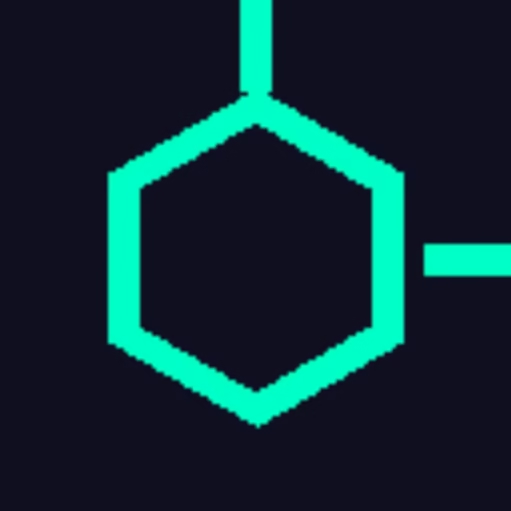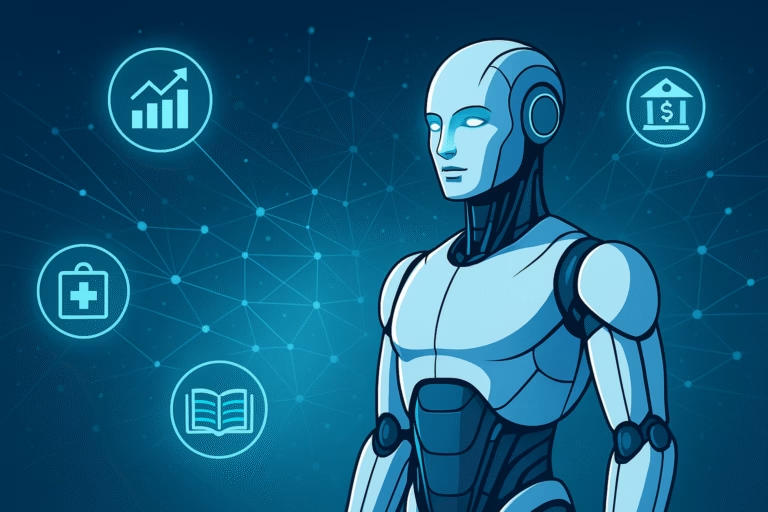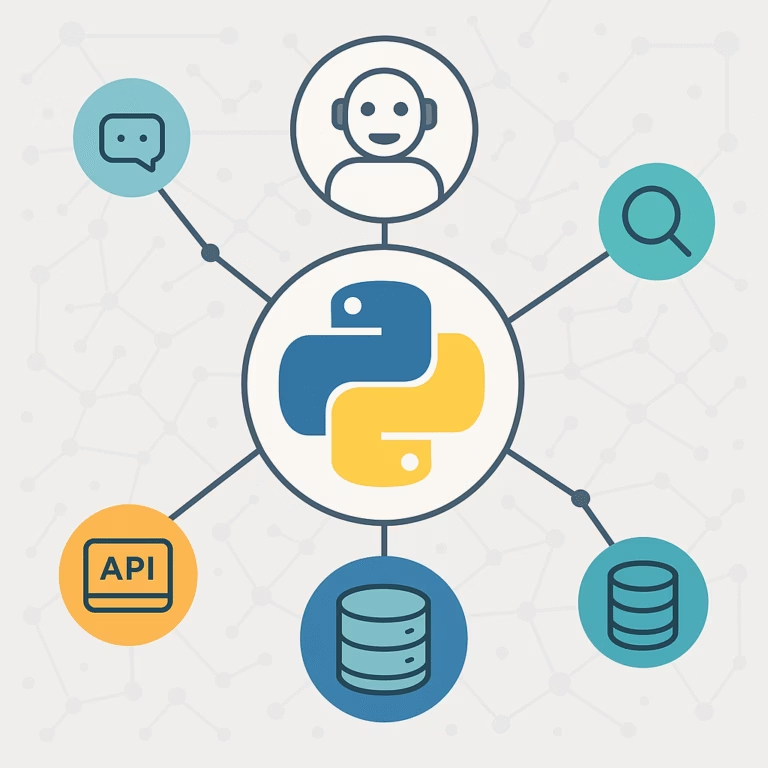Building AI Agents in Python: The Most Powerful Libraries
Artificial Intelligence agents are quickly becoming the backbone of modern automation — from research assistants and customer support bots to trading systems and autonomous reasoning engines.
But here’s the real question: which Python libraries should you use to build these AI agents?
In this guide, we’ll explore the best Python libraries for AI agent development in 2025, breaking down their features, use cases, and how to choose the right one for your project.
- 1. Why Python for AI Agents?
- 2. Best Python Libraries for AI Agent Development
- 3. Comparison Table of Python Libraries
- 4. Best Practices for Choosing a Library
- 5. Final Thoughts
1. Why Python for AI Agents?
Python has remained the gold standard for AI development for years, and for good reason:
- Vast ecosystem of AI/ML libraries
- Seamless integration with APIs and databases
- Support from frameworks like LangChain, Hugging Face, OpenAI SDK
- Flexibility for both prototypes and production-grade systems
In short, Python makes developing, testing, and deploying AI agents fast and practical.
2. Best Python Libraries for AI Agent Development
🟦 LangChain / LangGraph
- What it is: A framework for chaining LLMs with tools, APIs, and retrieval.
- Strengths: Huge community, supports multiple LLMs, has built-in memory and retrieval modules.
- Best for: Developers building complex multi-step reasoning agents and RAG systems.
🟩 OpenAI Agents SDK
- What it is: Official SDK for building AI agents with GPT models.
- Strengths: Clean design, safety guardrails, strong tool integration.
- Best for: Developers who primarily use GPT-4.2/4.1 and want fast prototyping.
🟧 Hugging Face smolagents
- What it is: Lightweight framework for local or Hugging Face-hosted models.
- Strengths: Works with open-source models, minimal overhead, community-driven.
- Best for: Open-source enthusiasts and local deployment.
🟨 Haystack
- What it is: A framework specialized for retrieval-augmented generation (RAG).
- Strengths: Enterprise-ready, excellent for knowledge retrieval, scalable search pipelines.
- Best for: Knowledge-intensive agents like research assistants or documentation bots.
🟥 Ray (RLlib & Serve)
- What it is: A distributed AI framework for reinforcement learning and serving.
- Strengths: Handles large-scale training, supports RL agents, and scales horizontally.
- Best for: Agents requiring reinforcement learning (finance, robotics, games).
🟪 CrewAI
- What it is: A collaborative multi-agent framework.
- Strengths: Lets multiple specialized agents work together in workflows.
- Best for: Complex pipelines like multi-role research or development agents.
🟫 Vector Databases (FAISS, Chroma, Weaviate)
- What it is: Databases for semantic memory and knowledge retrieval.
- Strengths: Enable long-term memory and context recall in AI agents.
- Best for: RAG-based agents and personalized assistants that need memory.
3. Comparison Table of Python Libraries
| Library / Framework | Key Use Case | Pros | Cons |
|---|---|---|---|
| LangChain / LangGraph | Complex workflows & RAG | Ecosystem, multi-LLM support | Can be heavy for simple apps |
| OpenAI Agents SDK | GPT-first agents | Clean, safety-focused | Vendor lock-in |
| Hugging Face smolagents | Open-source local agents | Lightweight, community-driven | Fewer enterprise features |
| Haystack | Knowledge retrieval agents | Scalable, RAG-focused | Less flexible outside RAG |
| Ray (RLlib & Serve) | Reinforcement learning agents | Scales well, RL-native | Steeper learning curve |
| CrewAI | Multi-agent collaboration | Role-based agents | Still emerging |
| Vector DBs (FAISS, Chroma, Weaviate) | Memory & RAG | Persistent knowledge | Must be combined with other libs |
4. Best Practices for Choosing a Library
When selecting a Python library for AI agent development:
- Start with your use case → don’t over-engineer with heavy frameworks.
- Combine libraries → e.g., LangChain + Chroma, or OpenAI SDK + FAISS.
- Think about scale → use Ray only if you need distributed learning/serving.
- Check ecosystem activity → choose actively maintained libraries.
5. Final Thoughts
AI agents are reshaping how software works in 2025 — moving from static scripts to autonomous, adaptive systems.
The best Python library depends on your goals:
- Want simplicity? → OpenAI Agents SDK.
- Need flexibility? → LangChain.
- Prefer open-source/local? → Hugging Face smolagents.
- Building knowledge agents? → Haystack.
- Scaling RL agents? → Ray.
By picking the right framework and combining it with vector databases, you can build powerful, intelligent agents ready for real-world tasks.



One Comment